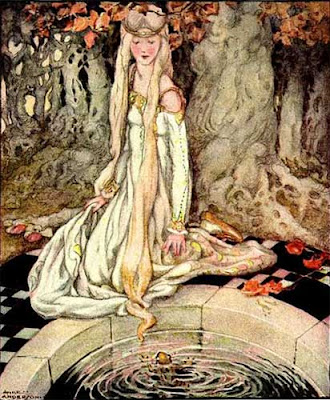Friday, May 7, 2010
Thursday, April 22, 2010
Fairy Tales; Anne Anderson, Maxfeild Parrish and Edmund Dulac
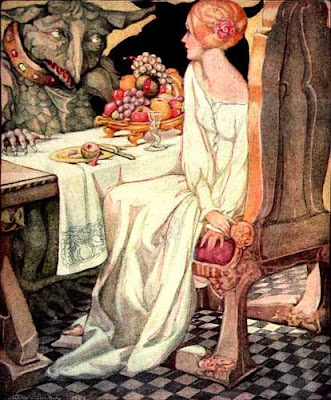
In 1912, she married a painter, Alan Wright and they settled in Berkshire. Wright had a successful career in illustration prior to 1898 when he illustrated a story for Baron Corvo. The story and Corvo were highly criticized in the press, and because of his association with the story, Wright’s commissions dried up until he married Anderson. They collaborated on many books together—he would draw the animals and birds and she would draw everything else. It has been said that it is difficult to distinguish his work from hers. But mostly, he dedicated himself to providing her with an environment conducive to her work.
In addition to her illustration, she was also an etcher, watercolor painter and designer of greeting cards. (biographical information from: http://www.ortakales.com/illustrators/)

A meticulous craftsman, Parrish's idiosyncratic painting method involved applying numerous layers of thin, transparent oil, alternating with varnish over stretched paper, yielding a combination of great luminosity and extraordinary detail. In his hands, this method gives the effect of a glimpse through a window....except that the scene viewed is from the fairy tale world.
In spite of the long time it took to perfect a painting, Parrish was prolific over the course of his productive years, from his children's books of the turn of the century, to his famous prints of androgynous, lounging nudes during the 1920s, to his calendar landscapes of the 1930s through the 1960s (Biographical information from: http://www.illustration-house.com/bios/parrish_bio.html)
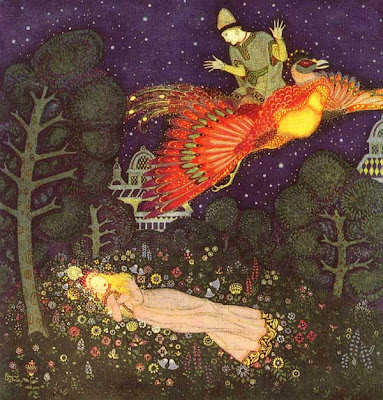
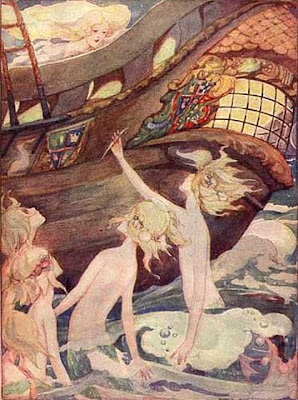
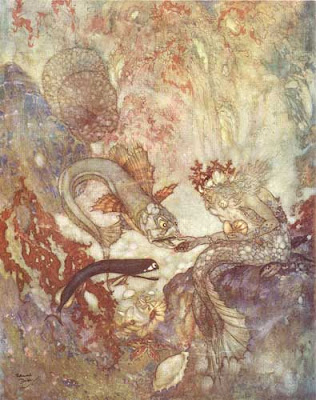
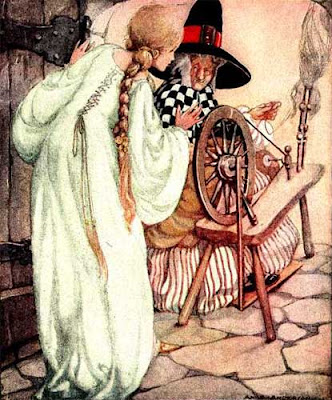

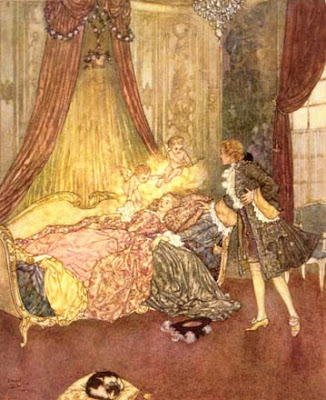
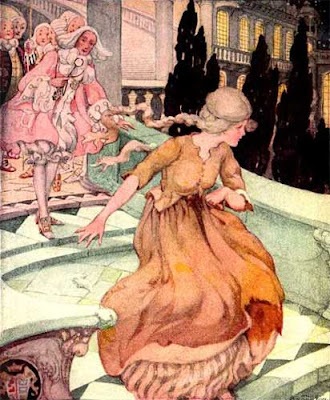
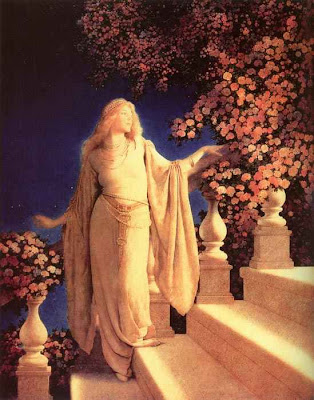

Saturday, April 10, 2010
kitsch and camp
Pronunciation: \ˈkich\
1 : something that appeals to popular or lowbrow taste and is often of poor quality
2 : a tacky or lowbrow quality or condition
— kitsch adjective
Camp is an aesthetic sensibility wherein something is appealing because of its bad taste and ironic value. The concept is closely related to kitsch, and campy things are described as being "campy" or "cheesy". When the usage appeared, in 1909, it denoted: ostentatious, exaggerated, affected, theatrical, and effeminate behaviour, and, by the middle of the 1970s, the definition comprised: banality, artifice, mediocrity, and ostentation so extreme as to have perversely sophisticated appeal.[1] American writer Susan Sontag's essay “Notes on 'Camp'” (1964) emphasised its key elements as: artifice, frivolity, naïve middle-class pretentiousness, and ‘shocking’ excess. Camp as an aesthetic has been popular from the 1960s to the present, and arguably peaked in the decades of the 1970s, 1980s, and to some extent the 1990s as well
Saturday, April 3, 2010
Nonchalant On Top of the Locker

Cut out of Black paper. I finished the structure of my sculpted cat, and decided it was a failed experiment. I had fun and learned from making it, but I still wanted to show something I was more proud of during critique. So, I decided to do something else I have been wanting to try for a while; cutting out a silhouette. This is the end result, I was pretty happy with it. In crit, Anthony said it was too decorative, and looked like something a mom would want in her kitchen. I agree... it did come out, overall, too "pretty." His other critique of this piece is that he didn't like my use of a cat to portray my word... he said that I was humanizing it and should have just done a human instead. This I don't really agree with... weather or not I am humanizing the cat, it is something we all do. It is an accepted humanization of the animal; I think everyone can agree cats are often pretty darn nonchalant. Since this is such an accepted attitude of the animal, I assume my viewer to understand this. Anyways... OVERALL, constructive crit, lots of mistakes and learning in my process, and a final piece I am happy with. As far as I am concerned, it was another good week.
